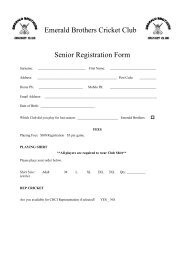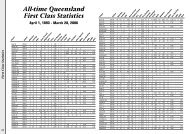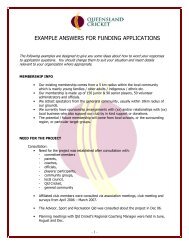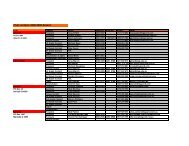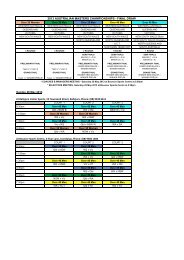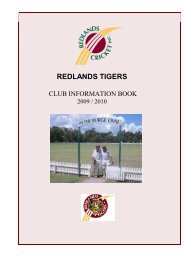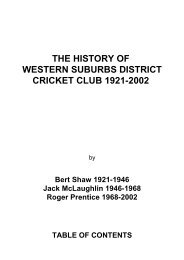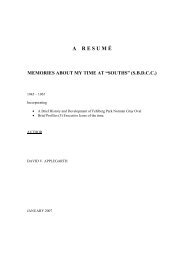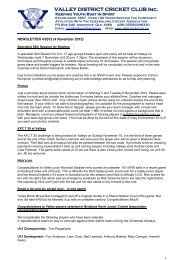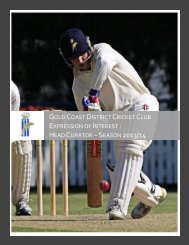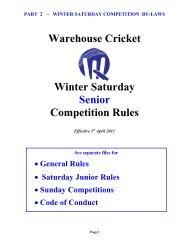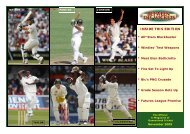QCSA Handbook on scoring 2010 - Queensland Cricket
QCSA Handbook on scoring 2010 - Queensland Cricket
QCSA Handbook on scoring 2010 - Queensland Cricket
- No tags were found...
Create successful ePaper yourself
Turn your PDF publications into a flip-book with our unique Google optimized e-Paper software.
Junior cricketJunior coaching development officers and games coordinators endeavour todevelop game formats and playing c<strong>on</strong>diti<strong>on</strong>s to allow for appropriateprogressi<strong>on</strong> from <strong>on</strong>e age group to the next.So <strong>scoring</strong> junior cricket can differ from senior <strong>scoring</strong> due to by-laws, gameformats and age progressi<strong>on</strong>, and these differences can vary fromcompetiti<strong>on</strong> to competiti<strong>on</strong>, grade to grade and age group to age group.For example, junior batting orders are usually set by the coach before thematch starts, so you should write the complete list in the scorebook, ratherthan waiting for each batter to go out as in senior cricket.In certain underage matches, batters must retire after facing a certainnumber of deliveries (e.g. 40 deliveries). They are usually allowed to comeback and c<strong>on</strong>tinue batting, but <strong>on</strong>ly after all other batters are out.For some underage games, a wide ball is counted as a ball faced and a run tothe batter. This is due to the fact that young bowlers can struggle with lineand length, so this by-law is to keep players interested and stop them frombeing frustrated.Listed below are some examples of differing rules and c<strong>on</strong>diti<strong>on</strong>s, butalways ensure you are aware of the local by-laws, as they could affect theway you are expected to score the match.Under 10s – n<strong>on</strong>-competitiveTo ensure fair participati<strong>on</strong>, each batter will face a set number of deliveries,depending <strong>on</strong> the number of players — the number of deliveries (e.g. 180balls for 30 overs) is divided by the number of players in the team. At theend of each innings, the batting team’s average score is calculated bydividing the total runs scored by the number of wickets lost. The winner ofthe game is the team with the highest average score.Under 12s – <strong>on</strong>e-day competiti<strong>on</strong> (c<strong>on</strong>crete orsynthetic pitches)All players bowl a minimum of two overs. No over is to c<strong>on</strong>tinue bey<strong>on</strong>dseven balls, regardless of the number of no balls.A batter must retire after facing 30 balls (excluding wides or no balls) or<strong>scoring</strong> 30 runs, whichever occurs first. Retired batters may resume theirinnings in order of retirement after all other batters have been dismissed.<strong>Queensland</strong> <strong>Cricket</strong> Scorers Associati<strong>on</strong>49



